Ancient Greek Theater Masks
Theater comes from the Greek word, “theatron.”
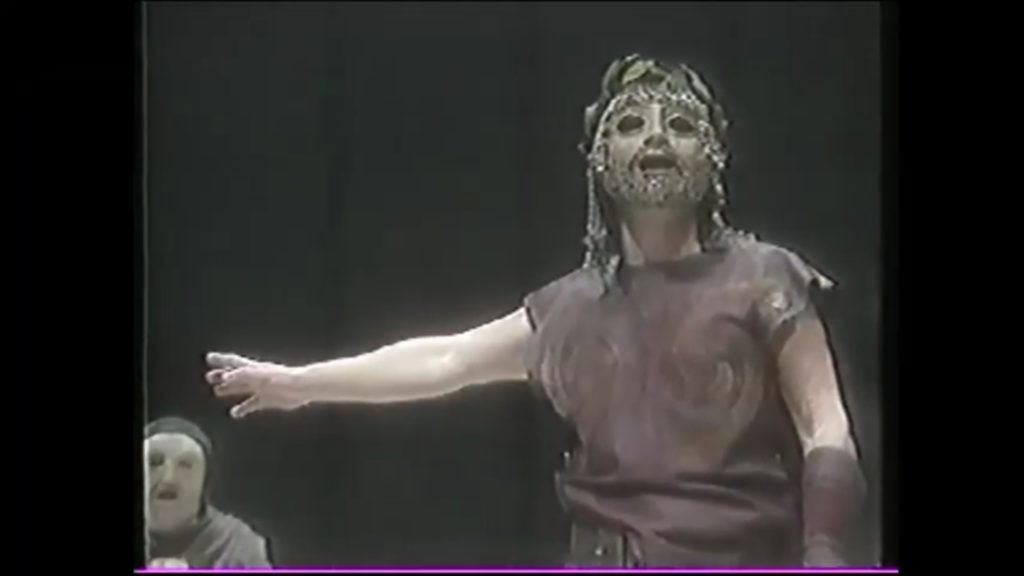
In the ancient Greek theater, actors wear masks to portray a character in a tragedy (sad ending) or a comedy (happy ending).
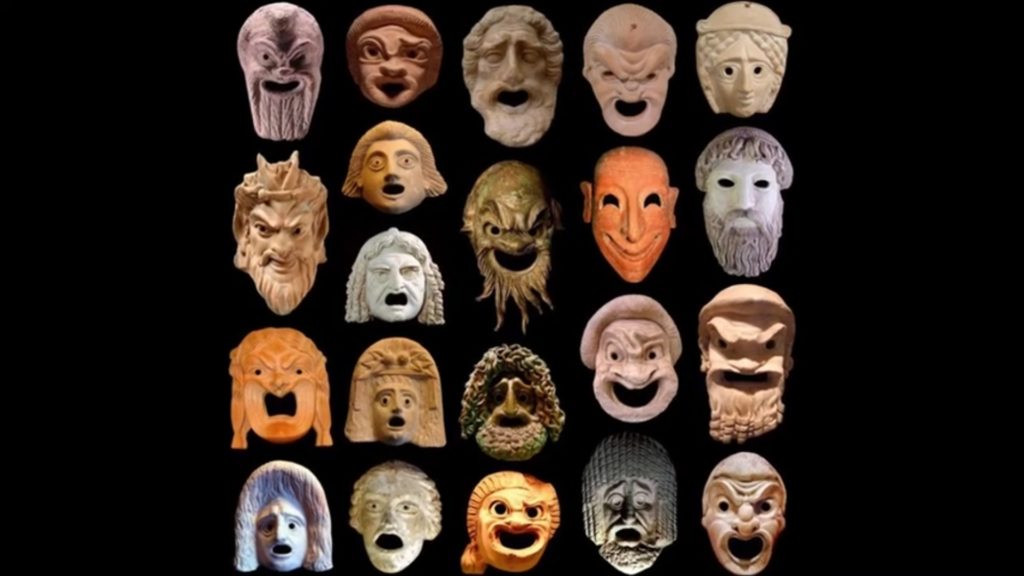
In the video, I demonstrated two ways you can make a theater mask.
First, the hard way…
You will need the following supplies: Empty cardboard box, scissors, box cutter, paints, brush, and clay.

First, cut out a bit of cardboard and draw the shape of a mask. Think about what kind of mask you are making: happy? sad? angry? afraid? shocked?
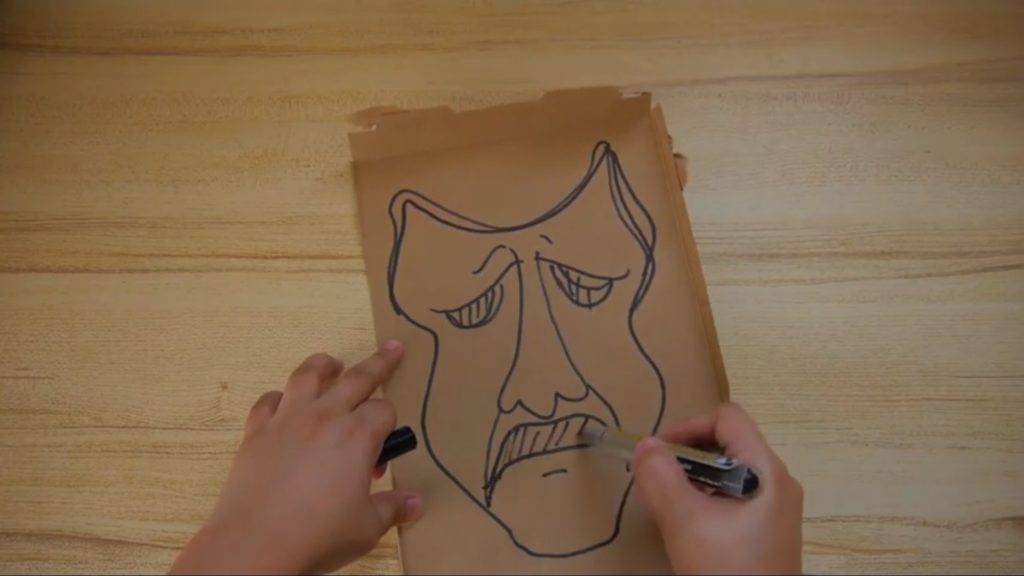
Cut out the face shape and then use a box cutter to cut out the eyes and mouth. Be careful! Cut slowly and keep the blade away from your fingers. Retract the blade when not in use, for your own safety. Also, use a thick cardboard underneath your mask to refrain from scratching the table.
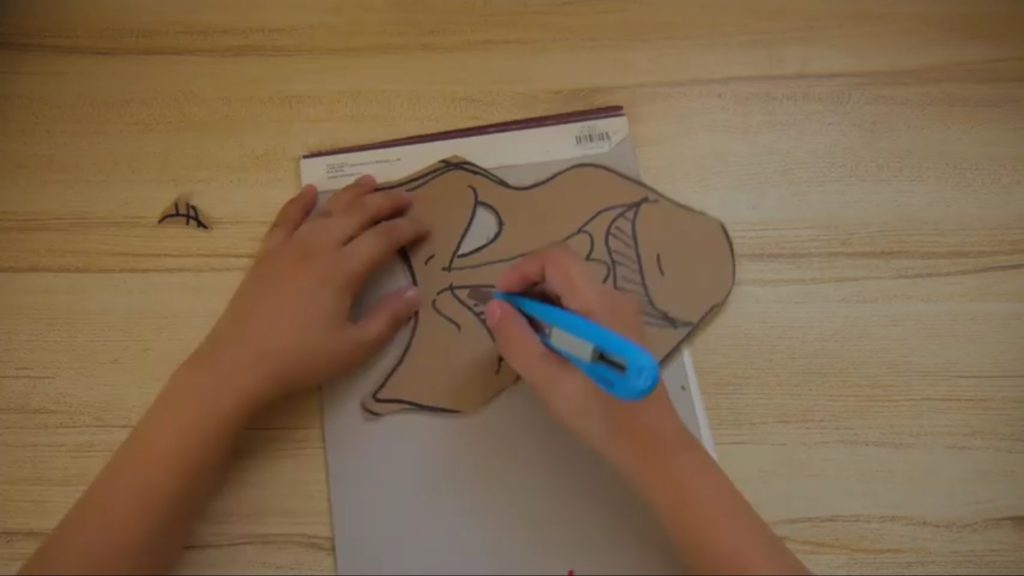
Using a little bit of clay, put some on the eyebrow area, the nose area, lip area and under-eye bags.
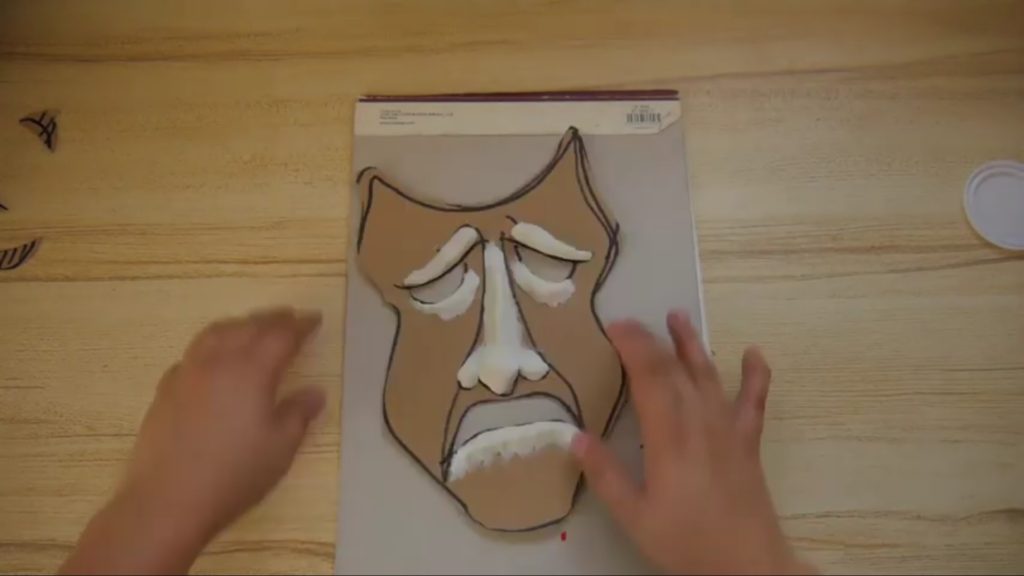
Then paint your mask, gently patting the brush over the clay parts to keep it from moving or losing its shape. I chose blue acrylic paints, but you can use whatever color paint you like.
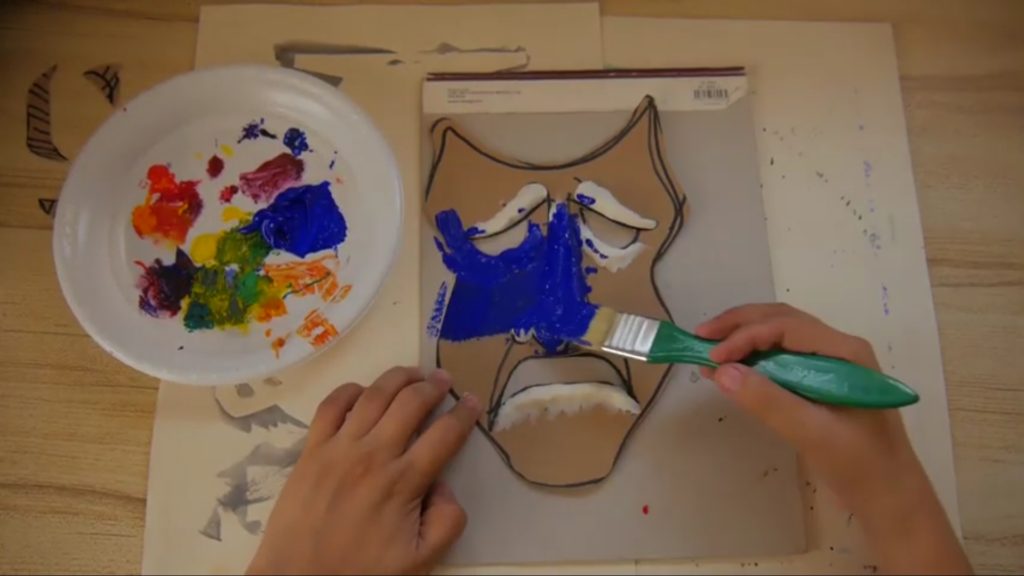
Now blend the blue with white acrylic paints. We are going to add highlights. This means that by adding the illusion that a light source is shining over certain parts of the mask will make it look more 3D; more realistic.
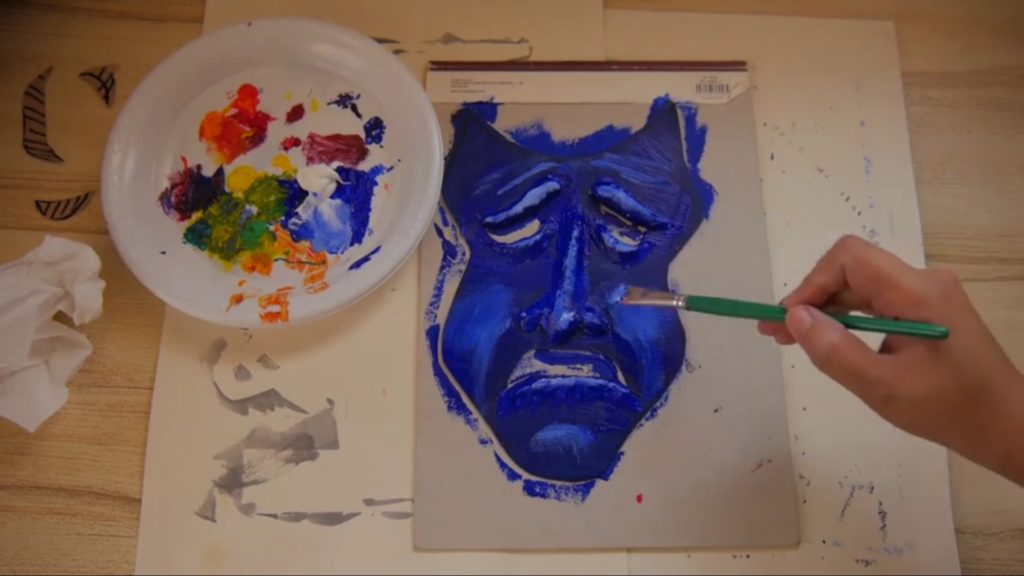
Leave it somewhere to dry. Next up, the easy way…
You will need these supplies:
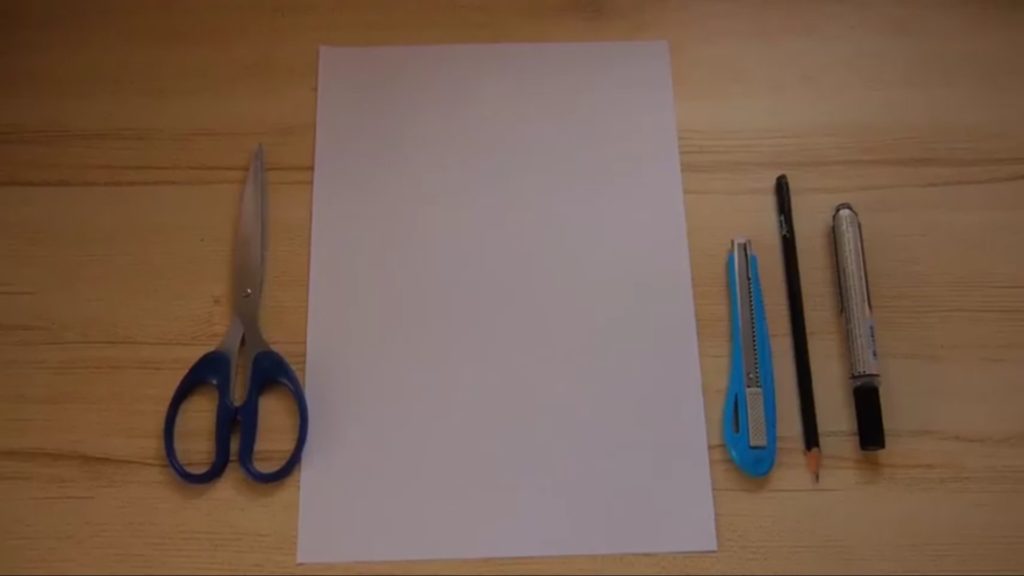
Fold the paper in half, lengthwise, and draw one half of the mask face (half of the lips, half of the nose, and one of the eyes). Then cut out the shape with scissors.
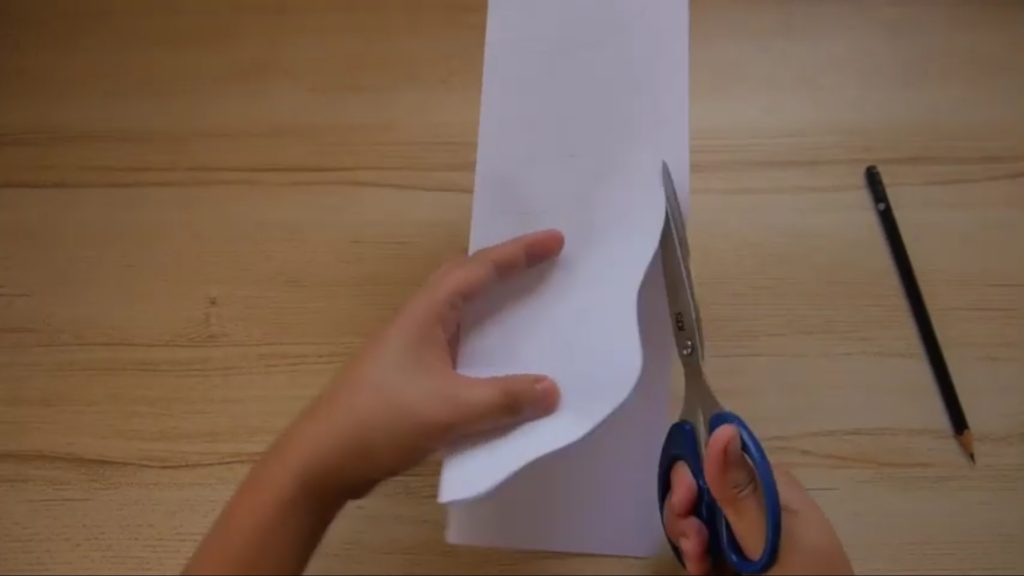
To cut out the eye part, use a box cutter but remember to place a thick cardboard underneath. You can cut out the mouth using scissors,
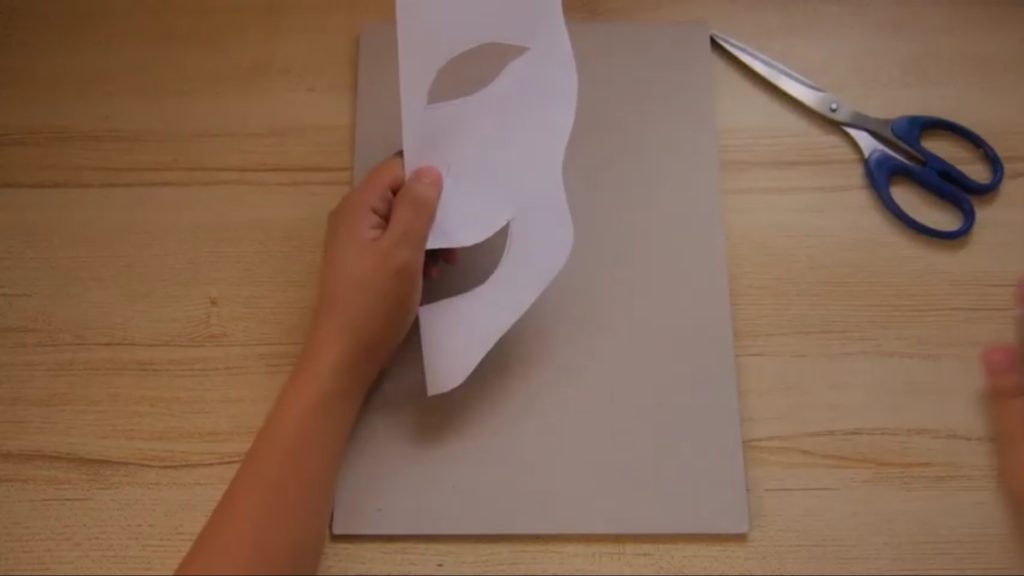
Now draw the parts of the face like eyebrows, nose, under-eye bags, and the cheek muscles. Then color it with a crayon or color pencil (or paint, if you prefer).
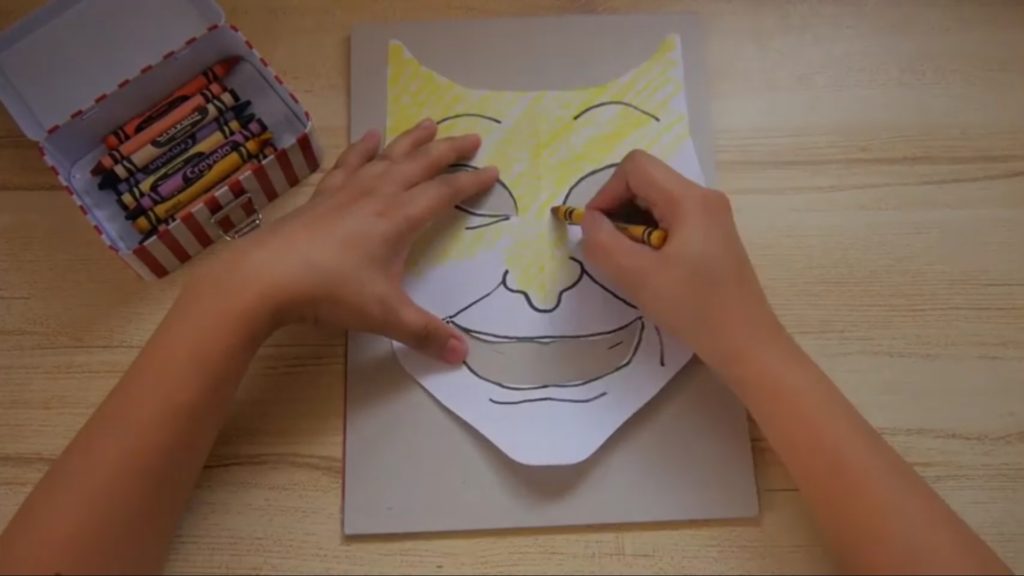
Now for the final part, choose another color to serve as the shading color. Shading helps make something look 3D, by suggesting that these are parts where a light source cannot touch, like under the eyebrows, below the eye bags, under the nose and cheek muscles, and between lower lip and chin.
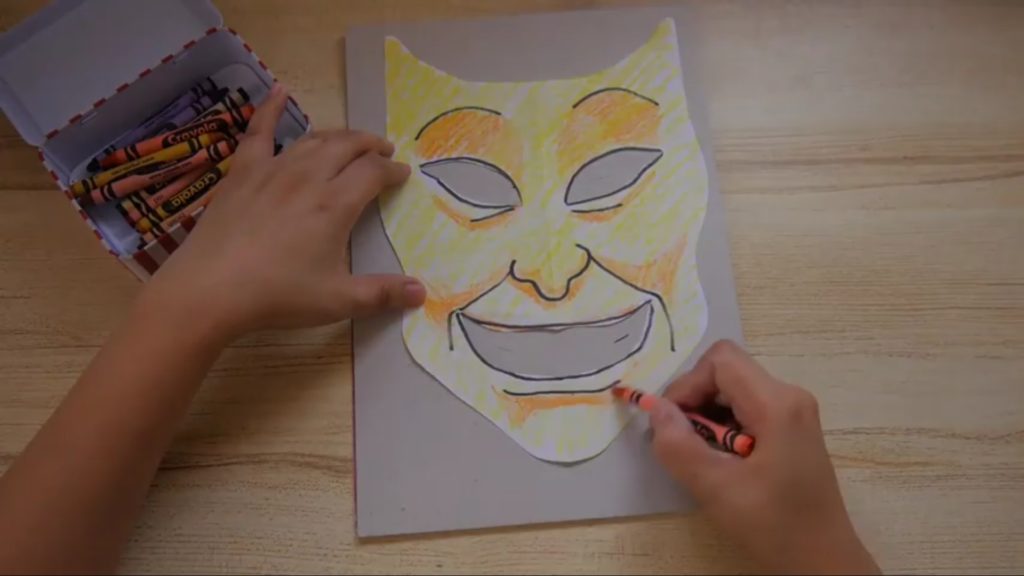
Once again, submit your work in the Assignment section of our Google Classroom. 😀 Can’t wait to see what you’ve come up with!
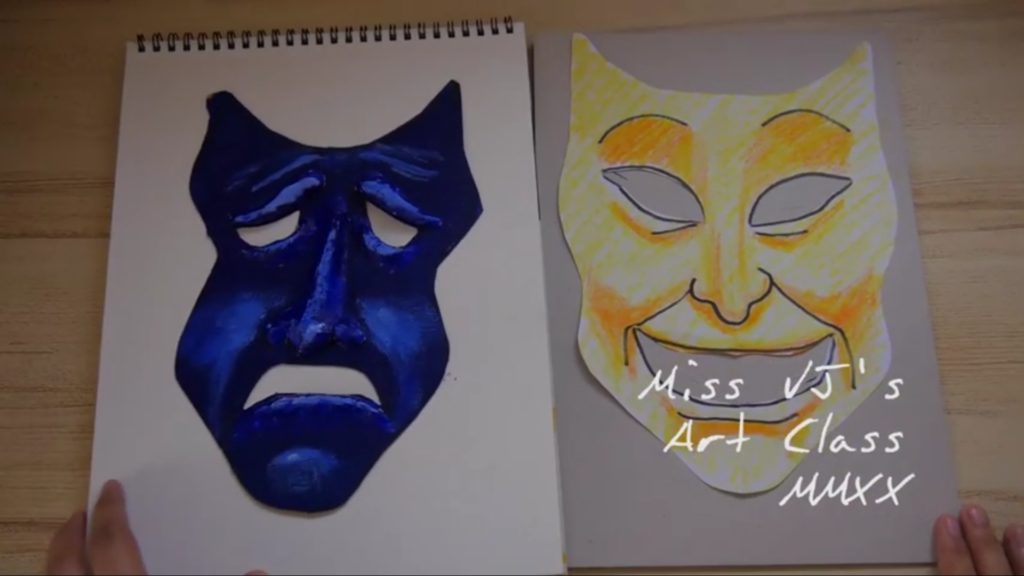
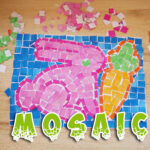 Next Post
Next Post